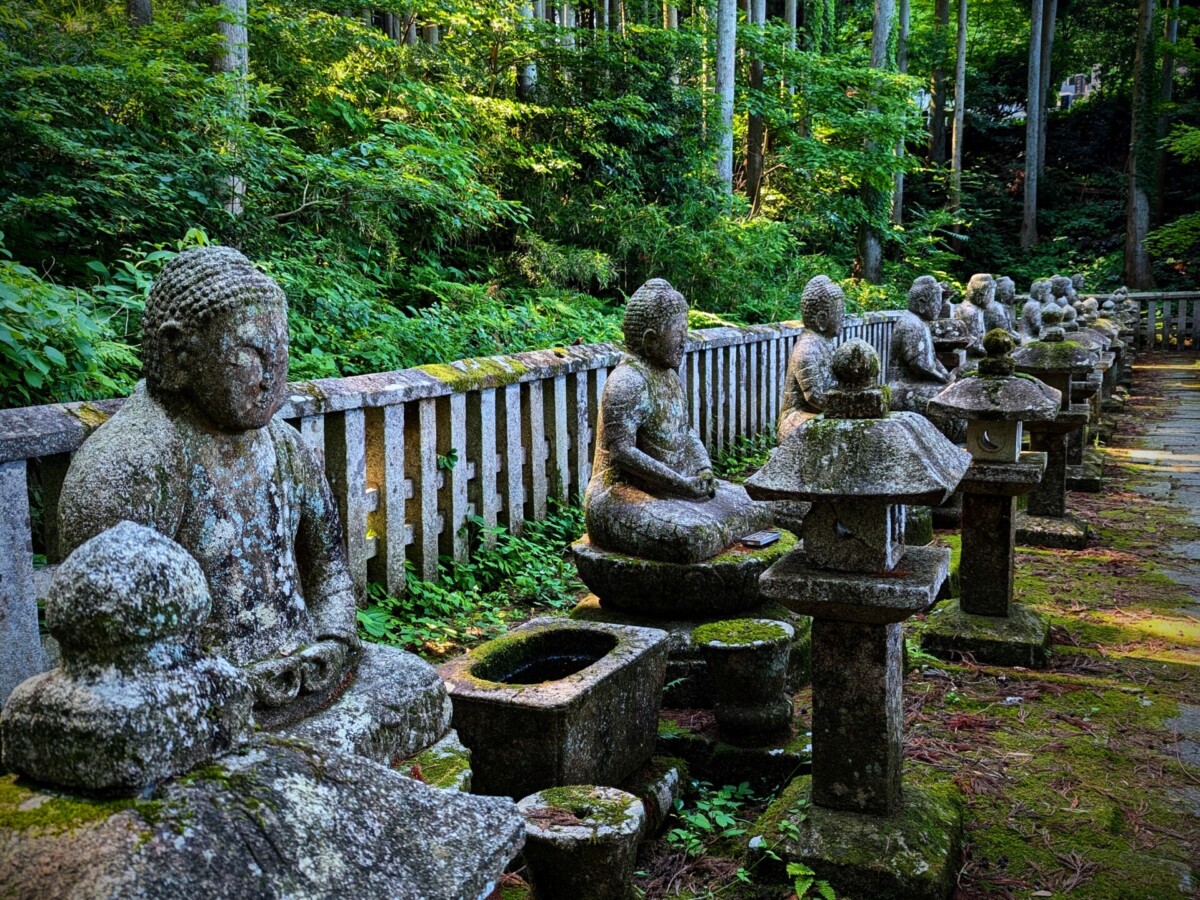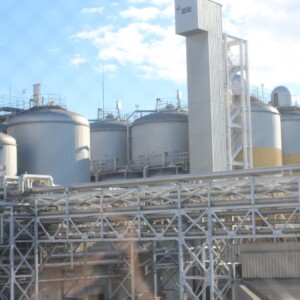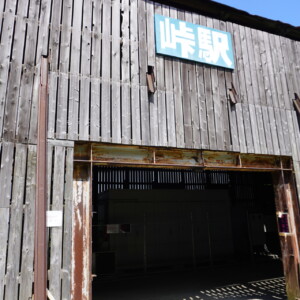
Four historical sites related to the famous Katakura Kagetsuna of Date Masamune and the Katakura family [Miyagi Prefecture]
table of contents
- 1 4 historical sites of Katakura Kagetsuna and the Katakura family
- 1.1 Shiroishi Castle, the residence of the Katakura clan, which was considered an exception to the One Country One Castle rule.
- 1.2 Joeizan Kessanji Temple, where there is a single cedar tree that is said to be the grave marker of the first Katakura Kagetsuna.
- 1.3 "Katakura Family Mausoleum" built by the third generation Katakura Kagenaga
- 1.4 The grave of Kita, who was Date Masamune's wet nurse and the creator of the black bell banner.
- 2 summary
Shiroishi City is located in the southern part of Miyagi Prefecture. It is famous for being the land ruled by Katakura Kojuro Kagetsuna , who was active as Date Masamune's right-hand man and was called ``Katakura Kagetsuna of Wisdom'' along with ` `Date Tatsumi of War. .
This time, I would like to introduce some historical sites related to Katakura Kojuro Kagetsuna and the Katakura family!
4 historical sites of Katakura Kagetsuna and the Katakura family
Kagetsuna Katakura the first generation of the Katakura clan of the Sendai domain , is famous as a great general who served as a tactician for Date Masamune . Kagetsuna 's common name , Kojuro, was continued by successive generations of family heads even after Kagetsuna's death, and all the heads of the Katakura clan call themselves Katakura Kojuro○○.
At the end of the Edo period, due to the defeat of the Ouetsu clan alliance in the Boshin War, members of the Katakura family migrated to Hokkaido, but the history of the Katakura family remained in Shiroishi until then. It is.
The following article follows what happened to the Date family vassals after the Boshin War.
Shiroishi Castle, the residence of the Katakura clan, which was considered an exception to the One Country One Castle rule.
Shiroishi Castle became a branch castle of Sendai Castle and the residence of the Katakura clan, vassals of the Date clan. The fact that the Date clan and the Shogunate, which Date Masamune had built, continued to exist even after the ``One Country, One Castle Order'' was issued in 1615 by the Shogunate to prevent rebellions against the Shogunate and wars between countries. It makes you feel a close relationship.
During the Boshin War the Shiroishi clan conference was held here, which led to the formation of the Ouuetsu clan alliance , and it was an important stage at a turning point in the era.

In 1995, the castle tower, Ote Ichinomon, and Ninomon were faithfully restored, and they are now symbols of Shiroishi City.
Details of the area around the castle and its interior are summarized in the article below.
Shiroishi Castle<Information>
- Name: Shiroishi Castle Ruins
- Address: 1-16 Masuoka-cho, Shiroishi City, Miyagi Prefecture 989-0251
- Phone number: -
- Official URL: http://www.shiro-f.jp/shiroishijo/
Google Maps
Joeizan Kessanji Temple, where there is a single cedar tree that is said to be the grave marker of the first Katakura Kagetsuna.
Temple was founded in 1608 by Kagetsuna Katakura as the family temple of the Katakura family.

The first generation Kagetsuna and the second generation Shigenaga were buried in this temple, but the third generation Kagenaga moved the mausoleum to Mt. Atago (currently the Katakura family mausoleum).
Currently, the 10th generation of the family head is buried at the Katakura Family Mausoleum in Mt. Atago, and the 11th and subsequent generations of the family and their wives are buried here at Ketsuzanji Temple.

Information board for the Katakura family cemetery. In addition to the Katakura family, Yasuhiro Matsumae, the seventh son of Yoshihiro Matsumae, the first lord of the Matsumae domain in Hokkaido, with whom he has connections, and his descendants are also buried here.

If you go deeper into the precincts and follow the guide up the mountain path, you will come across a 400-year-old cedar tree that is said to be the grave marker for the first generation Kagetsuna
Keshan Temple<Information>
- Name: Joeishan Jietshan Temple
- Address: 2-7-20 Minamicho, Shiroishi City, Miyagi Prefecture 989-0248
- Phone number: 0224-25-9258
- Official URL: https://kessanji.jp/
Google Maps
"Katakura Family Mausoleum" built by the third generation Katakura Kagenaga
Katakura Family Mausoleum is a mausoleum built by Katakura Kagenaga, the third generation, on October 14, 1680, the anniversary of the first Kagetsuna's death, by reburying the graves of Kagetsuna and the second generation Shigenaga from Kessanji Temple. .

Surrounded by a granite fence, it has a splendid structure with ten large stone statues lined up on a cobblestone floor and one tombstone, making it a valuable shrine that cannot be seen anywhere else. It is said to have a unique structure.
Outside the Tamagaki, on the right side of the photo, are the tombstones of six vassals who died under the first Kagetsuna.
By the way, a vassal is a vassal of a vassal, and with the Tokugawa shogun at the top, the daimyo is a vassal, and the daimyo's vassals are the vassals of the vassal from the perspective of the Tokugawa shogun.

Mrs. Masako, the wife of the seventh generation Murakado, is Date Yoshimura , so she is buried in this mausoleum, just like the castle lord.

The grave marker is a seated statue of Amida Nyorai, but only the tenth generation Munekage's grave marker is a square pillar stone monument.
Katakura Family Mausoleum <Information>
- Name: Katakura Family Mausoleum
- Address: Fukuoka Kuramoto Atagoyama, Shiroishi City, Miyagi Prefecture 989-0231
- Phone number: -
- Official URL: Shiroishi Sightseeing Navigation – Katakura Family Mausoleum
Google Maps
The grave of Kita, who was Date Masamune's wet nurse and the creator of the black bell banner.
If you go a little further along National Route 113 towards Shichikashuku from Mt. Atago, where the Katakura family mausoleum is located, you will find the daughter of Yoshinao Oniwa, a vassal of Date, the half-sister of Kagetsuna Katakura, and the wet nurse of Masamune Date. There is also the grave of Kita Katakura .
She was a woman who excelled in both literary and martial arts, and is thought to have had a great influence on Kagetsuna, who was about 20 years older than her, as well as Date Masamune's personality formation during his childhood.
After Masamune Date grew up, he was attached to Megohime, who was Masamune's legal wife, and in 1594, he went to Kyoto with Megohime, who became a hostage of Toyotomi Hideyoshi. She served as a servant at the Date residence in Fushimi and had an audience with Hideyoshi Toyotomi, who was said to have noticed Kita's talent and praised her as ``Shonagon.''

The Katakura family's flag, a black bell on a white background, was devised by Kita for Kagetsuna, and is said to symbolize the wish that the Katakura family's name would ring throughout the world, as well as the meaning of mourning the spirits of those killed in war. Masu.
Kita's grave <Information>
- Name: Katakura Kita's grave
- Address: Fukuoka Kuramoto Taira Yashiki, Shiroishi City, Miyagi Prefecture 989-0231
- Phone number: -
- Official URL: Shiroishi Sightseeing Navigation – Kita’s Tomb
Google Maps
summary
Shiroishi City is famous for Shiroishi Washi, Shiroishi Onmen, Yajiro Kokeshi dolls, and recently Zao Fox Village, but it is still a castle town. There are also many historical sites that testify to its long history. Although it was in the form of an interview, it was very moving to be able to follow in the footsteps of Kagetsuna Katakura, who I have a personal fondness for.
By the way, Shiroishi also has several historical sites related to Yukimura Sanada, who had a strange connection with the Katakura family, and his descendants.
Those are summarized in a separate article, so if you are interested, please take a look.






![[Chokaisan and Tobishima Geopark: Yurihonjo Edition] A strata from when Japan was the Eurasian continent can be seen B5C46A18BC0CC0CC0E9AD08084EAA5B](https://jp.neft.asia/wp-content/uploads/2024/04/b5c46a18bc0cc79de0e9ad08084eaa5b-150x150.jpg)
![Scary and slightly sad stories... "Michinoku Otogi Kaido" with many stories left behind [Shichigasyu-cho, Shiraishi City, Miyagi Prefecture] Fairytale images](https://jp.neft.asia/wp-content/uploads/2023/04/be73b392233d2fe609797e999f8ca547-1-150x150.jpg)
![There is also a castle with a castle tower in Miyagi! Shiraishi Castle, the castle of Katakura Kagetsuna, the senior retainer of the Date family [Miyagi Prefecture] Shiroishi Castle and stone monument](https://jp.neft.asia/wp-content/uploads/2023/10/22427768_m-150x150.jpg)
![Karitamin Shrine in Zao Town, the center of "swan faith" that is passed down in the southern part of the prefecture [Miyagi Prefecture] Monument in the swan](https://jp.neft.asia/wp-content/uploads/2025/01/IMG_0975-EDIT-1-150x150.jpg)
![Is it the end of a tragedy or Masamune's conspiracy?... The life of Date Masamune's father, Terumune [Fukushima Prefecture] Date_Terumune](https://jp.neft.asia/wp-content/uploads/2024/12/Date_Terumune-150x150.jpg)
![Kurikoma foot Geopark learned from large-scale landslide disasters [Miyagi Prefecture] Autumn leaves of Mt. Kurikoma](https://jp.neft.asia/wp-content/uploads/2023/08/22090138_m-150x150.jpg)
![Demon's Jigokudani Promenade! The geyser of the steam is truly a hellish sight! ? [Miyagi Prefecture] 5148713_m](https://jp.neft.asia/wp-content/uploads/2023/08/5148713_m-150x150.jpg)











